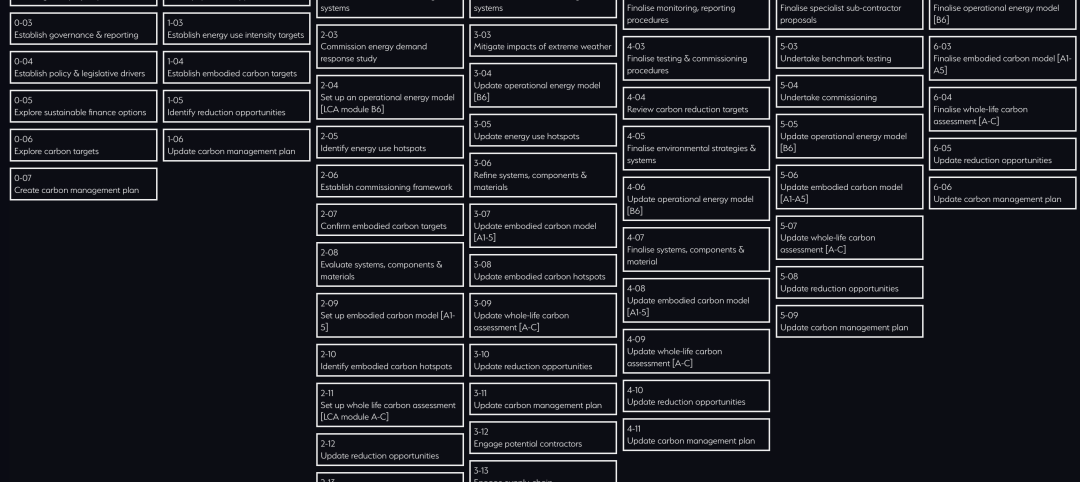For years, the steel joist industry standard has been that loads either need to be applied at panel points, or a member brace (strut) must be added in the field. In response to inquiries from structural engineers and other members of the Building Team, the Steel Joist Institute recently issued a new rule for loads not exceeding 100 pounds within any given panel.
The full text of the SJI rule reads as follows: “For nominal concentrated loads between panel points, which have been accounted for in the specified uniform design loads, a strut to transfer the load to a panel point on the opposite chord shall not be required, provided the sum of the concentrated loads within a chord panel does not exceed 100 pounds and the attachments are concentric to the chord.”
Bruce Brothersen, engineering manager for Vulcraft-Utah, Brigham, Utah, says, “The rule is an attempt to better define what is acceptable and put some quantitative numbers to it.”
Tim Holtermann, corporate engineering manager for Canam Steel in Washington, Mo., says that even with the new rule, manufacturers remain concerned that “people may be hanging things in excess of 100 pounds away from panel points and not field-adding struts, as they’re required to do.”
Holtermann says one option for structural engineers is to ask the manufacturer to provide a specially designed joist that can take point loads over 100 pounds without the added members. “It’s not uncommon to have a design requirement for, say, 250 pounds or 400 pounds,” he says. “We can readily do that as long as the magnitude of the loads and this design requirement are specified on the contract drawings.”
DON’T WAIT FOR THE FINAL PUNCH LIST
Often the problem with the joist loads isn’t discovered until the project is completed and the final walkthrough is taking place, says Joe Pote, director of research and development for New Millennium Building Systems, Hope, Ark.
“The inspector notices ductwork or sprinkler lines or mechanicals hanging from the joists between panel points that aren’t called out on the contract drawings,” says Pote. “Then he comes back to us and asks if it’s okay.” Many times the loads are small (20-50 pounds), so additional reinforcement isn’t necessary. “But we never had a good rule that stated the maximum load,” he says. “I think it helps clear up some of the discrepancy between SJI requirements and actual field practice.”
The manner in which the loads are hung is a key element of the 100-pound rule, says Holtermann. “The rule presumes that the load will be placed concentrically,” he says.
As SJI managing director Ken Charles notes, some trade installers make the mistake of attaching beam clamps to only one bottom chord angle of the joist instead of both. On top of that, he says, “the load isn’t placed concentrically even to that one chord angle, so you’re inducing some torsion and bending of the horizontal leg of the angle.”
His advice: “By far the better way to do it is to make sure the attachment is always concentric and always attached to both chord angles.” (See diagram.)
Steel Joist Do’s and Don’ts
- Recognize how and when to specify total uniform load or factored load and/or net uplift load, and when loads need to be broken out by load category and combinations.
- Know the limits of a concentrated load applied between panel points before an additional web is needed on the joist. The Steel Joist Institute’s new “100-pound rule” clarifies these limits.
- Install bridging early and follow the proper procedures to avoid safety problems, such as a partial building collapse.
- Designate a field representative to inspect the joists during construction and ensure that components are being installed correctly.Ideally, a representative of the team should walk the job site before completion and look for situations where loads aren’t handled correctly.
“A lot of times there’s a disconnect between the design intent and the construction site personnel,” says Charles. “Some sites have representatives in the field to do inspections, but often that’s not the case. Those are the projects that are most likely to have problems down the road when the final punch list is done.”
GET YOUR SPECS STRAIGHT
Joists are designed to handle different types of loads, such as dead load, live load, and wind, snow, and seismic loads. A given joist might experience more than one type of load, so the joist manufacturer needs to know which loads apply and properly combine them according to parameters set by the International Building Code. Most jurisdictions use the 2006 version of the IBC or the 2009 version, which is similar with regard to steel joists.
Brothersen notes that the building code loading combinations are based on the probability of which loads will act simultaneously. “For instance, the probability of a seismic event occurring when the maximum snow load is on the joist is relatively small, so the building code reduces the loads in those cases,” he says. “This is more realistic and doesn’t require manufacturers to design for the maximum load in every category at the same time.”
Pote says manufacturers prefer, when it’s feasible, that loads be provided to them as either a total uniform load or a factored load. In other words, if all components of the joist can be designed for a single downward-acting load case and a single upward-acting load case, the easiest thing for engineers to do is provide the total uniform load and/or net uplift load (dead load minus wind load).
“It’s just easier to communicate,” says Charles. “However, if we have to consider multiple load combinations, we need the breakdown—dead load, live load, snow load, and so forth.”
Holtermann adds that if the structure might be affected by downward-acting winds, the total uniform load should assume the worst-case scenario.
DON’T FORGET THE BRIDGING
Once the joists arrive on site, it’s important that bridging be installed early and correctly, says Brothersen. “If the joists are put up but the bridging isn’t installed, it can become a safety issue.” For example, lack of bridging can result in a partial building collapse when the crew begins stacking bundles of deck material on the joists.
Charles agrees. “The best-laid plans of the engineer and manufacturer can go out the window when the product arrives at the job site and the erector doesn’t follow proper safety regulations and the manufacturer’s advice.” BD+C
--
Editor’s note: To order SJI’s “43rd Edition Catalog of Standard Specifications and Load and Weight Tables for Steel Joists and Joist Girders,” go to: http://steeljoist.org/free-download-form.
Related Stories
MFPRO+ News | Jul 22, 2024
6 multifamily WAFX 2024 Prize winners
Over 30 projects tackling global challenges such as climate change, public health, and social inequality have been named winners of the World Architecture Festival’s WAFX Awards.
Office Buildings | Jul 22, 2024
U.S. commercial foreclosures increased 48% in June from last year
The commercial building sector continues to be under financial pressure as foreclosures nationwide increased 48% in June compared to June 2023, according to ATTOM, a real estate data analysis firm.
Codes and Standards | Jul 22, 2024
Tennessee developers can now hire their own building safety inspectors
A new law in Tennessee allows developers to hire their own building inspectors to check for environmental, safety, and construction violations. The law is intended to streamline the building process, particularly in rapidly growing communities.
Codes and Standards | Jul 22, 2024
New FEMA rules include climate change impacts
FEMA’s new rules governing rebuilding after disasters will take into account the impacts of climate change on future flood risk. For decades, the agency has followed a 100-year floodplain standard—an area that has a 1% chance of flooding in a given year.
Construction Costs | Jul 18, 2024
Data center construction costs for 2024
Gordian’s data features more than 100 building models, including computer data centers. These localized models allow architects, engineers, and other preconstruction professionals to quickly and accurately create conceptual estimates for future builds. This table shows a five-year view of costs per square foot for one-story computer data centers.
Sustainability | Jul 18, 2024
Grimshaw launches free online tool to help accelerate decarbonization of buildings
Minoro, an online platform to help accelerate the decarbonization of buildings, was recently launched by architecture firm Grimshaw, in collaboration with more than 20 supporting organizations including World Business Council for Sustainable Development (WBCSD), RIBA, Architecture 2030, the World Green Building Council (WorldGBC) and several national Green Building Councils from across the globe.
University Buildings | Jul 17, 2024
University of Louisville Student Success Building will be new heart of engineering program
A new Student Success Building will serve as the heart of the newly designed University of Louisville’s J.B. Speed School of Engineering. The 115,000-sf structure will greatly increase lab space and consolidate student services to one location.
Healthcare Facilities | Jul 16, 2024
Watch on-demand: Key Trends in the Healthcare Facilities Market for 2024-2025
Join the Building Design+Construction editorial team for this on-demand webinar on key trends, innovations, and opportunities in the $65 billion U.S. healthcare buildings market. A panel of healthcare design and construction experts present their latest projects, trends, innovations, opportunities, and data/research on key healthcare facilities sub-sectors. A 2024-2025 U.S. healthcare facilities market outlook is also presented.
K-12 Schools | Jul 15, 2024
A Cleveland suburb opens a $31.7 million new middle school and renovated high school
Accommodating 1,283 students in grades 6-12, the Warrensville, Ohio school complex features flexible learning environments and offers programs ranging from culinary arts and firefighting training to e-sports.
MFPRO+ News | Jul 15, 2024
More permits for ADUs than single-family homes issued in San Diego
Popularity of granny flats growing in California

















